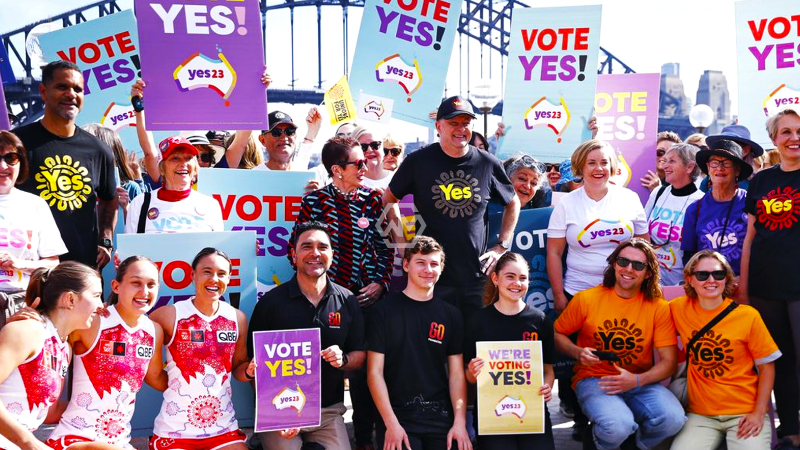- The Australian Electoral Commission is aware of material from the Yes23 campaign.
- The Yes23 campaign had signs outside at least one early voting location for the Indigenous voice referendum.
- The AEC has previously warned campaigns not to use the purple and white colors.
The Australian Electoral Commission is aware of material from the Yes23 campaign that employs a purple color that is similar to its own “longstanding” logo and has warned that it could “potentially mislead voters.”
The Yes23 campaign had signs outside at least one early voting location for the Indigenous voice referendum, according to a statement released by the AEC yesterday night. These signs were located adjacent to the AEC’s own “voting center” signs.
Pro-yes campaign
Although it included the legally required authorization declaration, it also included white letters on a purple background that matched the AEC’s “longstanding branding”.
A voter could be misled regarding the source of the signage and, consequently, the source of the message on the signage by this use of the colors purple and white together near AEC signage.
As a result, the AEC asked the Yes23 campaign to make sure that their signs were not put close to AEC voting center signs when we became aware of this signage. The Yes23 campaign has consented to abide by this demand.
The AEC has previously warned campaigns not to use the purple and white colors in a way that could be deceptive, but it has been made clear that it lacks the legislative authority to forbid the use of specific colors.
Additionally, the AEC lacks the legal power to forbid candidates from canvassing outside of polling places that are six meters from the door, save in extremely specific instances.
While AEC officers are unable to remove signs that might mislead viewers as to the source of the message, we do anticipate that our request for the sign’s originator will be heeded.



